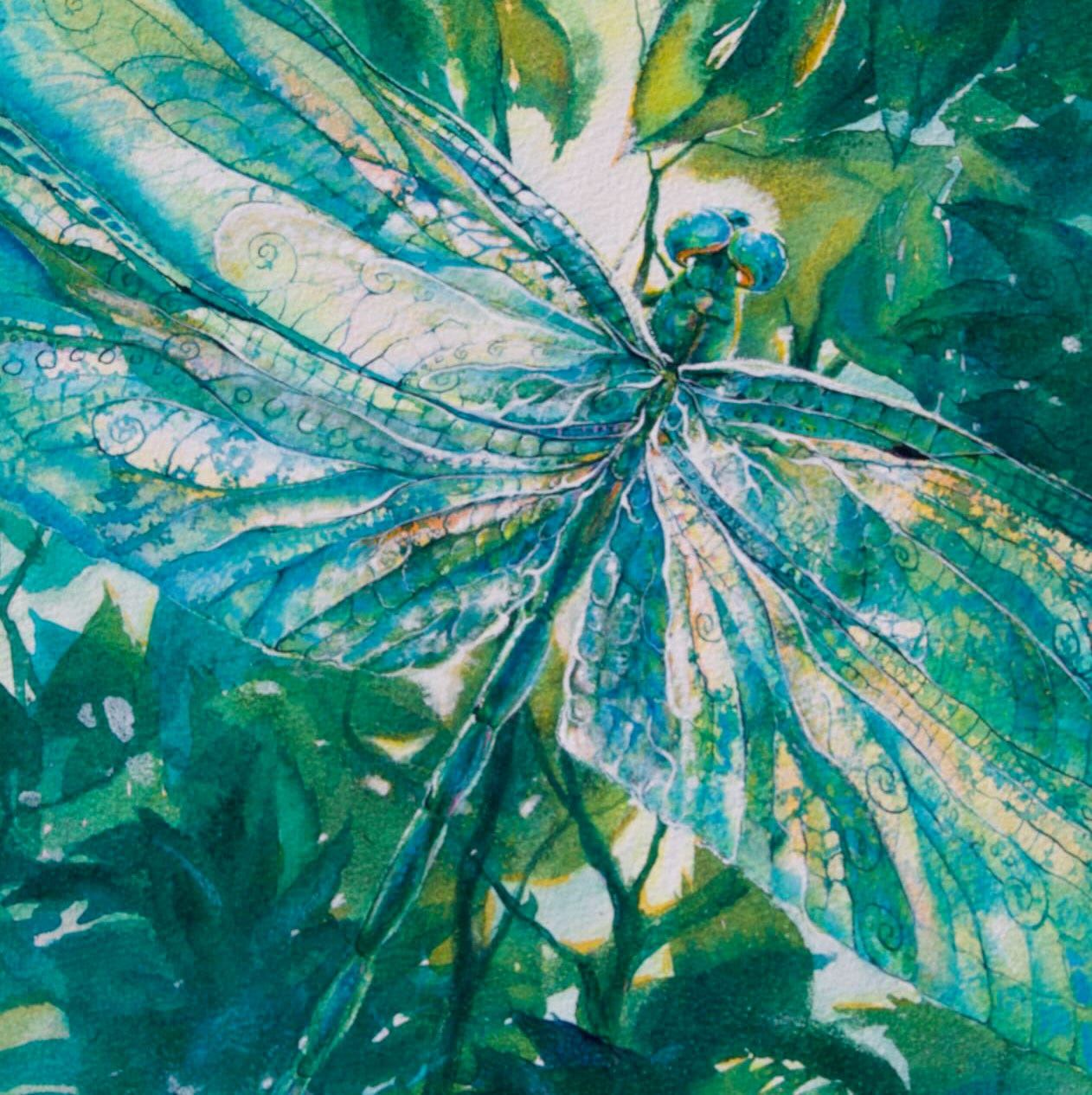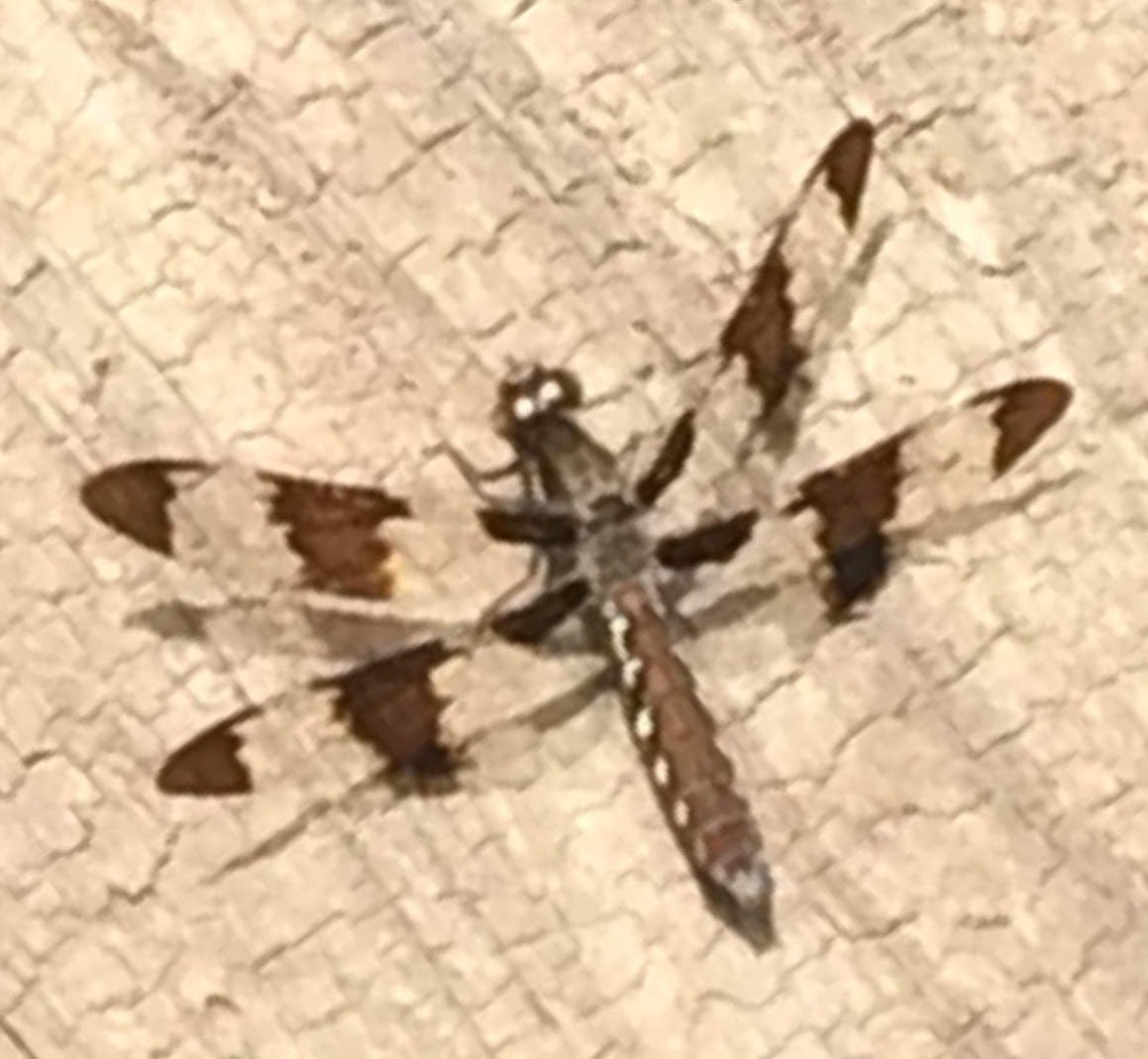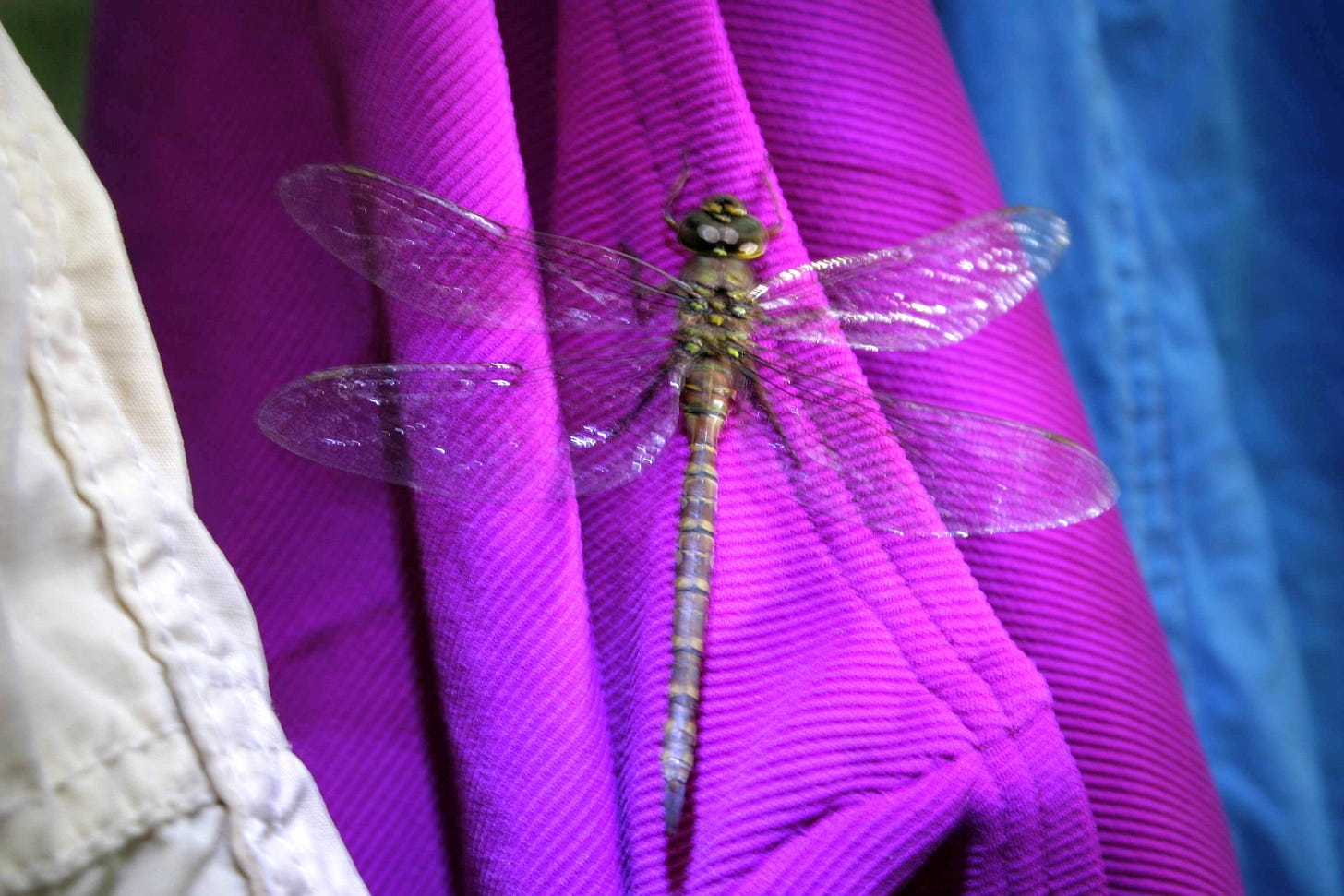Intuitive painting, part 2—Managing the voices in your head
More structures/systems to guide intutitive painting (helpful for other kinds of painting, too!)
In this post, I’m going to share two ways to give a little structure to your intuitive painting process. The first strategy happens to also be helpful even if you mostly paint pretty closely from photos, so I hope everyone will find something useful here.
For those who want to get right into a painting project, the second suggestion gives you a way to start an intuitive painting with a built-in structure that you can play freely within and around.
A little Substack help
Substack recently changed the look of their website and the reader app. If you’ve been struggling with the new layout, you’re not alone! If you are ever having a hard time finding a past article or one of our Chat threads, you can visit my post archive on Substack by going to lynnebaur.substack.com. There are tabs at the top of the page for Notes and Chat, and all the past posts are laid out here in reverse chronological order.
Managing the many voices of intuition
In the last post in this series (or see this link for the short version), I outlined the three big questions we face when we want to paint more intuitively:
If I don’t have a scene or photo to guide me,
how do I begin?
how do I guide my creative decisions as I work?
how do I know when I’m done?
In that post, I suggested an exercise I called “pure” intutitive painting. In that exercise, you answer these questions at each step of the painting by simply listening for the tiny little voice of intuition inside you and acting on that impulse without looking for a rational explanation.
Most people find that exercise a lot of fun at the beginning, and then more and more frustrating or difficult as you go along. If you found it difficult to use pure intuition to arrive at a finished painting, you’re not alone. The main point of that exercise is not to make a painting, but simply to practice focusing your attention on those internal impulses. But why is it so common to wind up feeling stuck or indecisive when painting purely intuitively (or sometimes even when you’re only making some small edits to a photo)?
Why is it sometimes so hard to know what you want to do next?
What is the voice of intuition?
It sounds simple to simply keep listening for the little voice of intuition, but if you start paying close attention, you may discover the voice of intution not one pure, unerring inner voice.
For me, it’s not just a matter of getting past my inner critic; I have a whole chorus of internal voices vying for my attention.
Here are some of the voices that I hear when I start listening for internal impulses about what to do next with a painting:
opinions and attitudes of various friends and family members
advice from teachers and mentors
guidance from books or videos about how this or that should be done in watercolor
notions about art and art-making absorbed from our wider culture
commercial considerations, if the art piece will be offered for sale or has been commissioned
memories of art I’ve seen and admired (or not)
my own past experience with things that worked well (or not) in other paintings
my personal preferences about what I like to look at
my personal preferences and pet peeves about what I like to do in my art-making
my hopes about how and what this piece of art will communicate
my feelings about the audience I’m making this piece of art for
my current physical, mental and emotional state: energy level, hunger/thirst, discomfort or pleasure, etc.
my watercolorist’s “inner timekeeper” reminding me that everything is drying while I’m standing there pondering my next move
These voices don’t always agree. Some of them are happy to chime in all the time, even when their advice isn’t useful. I think some of them just like to argue. It’s no wonder we sometimes feel paralyzed with indecision when trying to paint “intuitively”! (Or maybe it’s just me.)
I’ve used the term “intuitive” painting because thats seems to be the common phrase for a painting process where (at least some) creative choices are made on the basis of internal impulses without necessarily seeking a rational explanation to justify each one. But which impulses? Which of these voices is the voice of intuition? Which of these voices do you want to listen to?
There’s been a lot written on how to silence your inner critic, as if the only internal voice that creates problems is the one that sounds like the middle school lunchroom crowd from your nightmares. But I find it a lot more difficult to balance the many reasonable voices vying for my attention.
Setting up guardrails to keep me on course
In the last post, I talked about creating structures or systems to guide intuitive painting. One type of structure I find helpful is a set of guardrails for myself about when and how much I will listen to these various voices.
For me, it’s not always as simple as just banishing every voice that’s not mine. I’m not sure it’s even possible to know which of our attitudes and preferences are purely ours, but philosophy aside, there are practical reasons to give weight to other voices. If I’m painting something on commission, I definitely want to take into account the things I’ve agreed to do for the client, even if they wouldn’t be my first choice for an artwork to hang in my own home.1 If I’m painting a postcard to cheer up a friend, I want to put more weight on their color preferences and favorite subject matter than my own.
About now, you might be thinking, Well, duh, that’s just common sense! It didn’t require explaining. Good point. But that doesn’t stop me from losing sight of it when I get into the painting.
Instead of (or in addition to) having the kind of plan where I lay out all the techniques I’ll use to paint this part or that part of the scene, in what order, I like to set up some explicit guidance for myself about which particular “little voices” I’m going to listen to most closely while I work on this painting.
I think of this as creating guardrails to keep me from wandering off in the wrong direction when I get tired or distracted by all the things I have to juggle once the brush is moving. I think watercolorists have a particular challenge with losing sight of plans and intentions once the painting is underway: we don’t have the luxury of pondering each move as long as we’d like. Things are drying while we stand there pondering.
What do these guardrails look like? Nothing complicated; usually just a few notes in my studio journal or on an index card. It seems pretty basic, but it makes a huge difference to me just to have taken a moment to write down a couple of sentences or phrases about which internal voices I am listening to most closely as I work on this painting.
It’s tempting to think the reason I’m painting this painting is so obvious I don’t need to write it down. But I’ve learned that it’s really easy for me to start listening to the wrong voices once I’m in the process of painting. Especially as I get a little tired, or when I reach the “ick” stage.2
If I don’t re-orient myself to the big picture, I have a tendency to continue after a break (even a short one!) with thoughts of “fixing” whatever was bugging me most at the end of the last work session. It takes less than a minute to write a few reminders to myself on an index card and glance at it before I start painting again. For me, it’s time well spent.
Substitute purpose for destination
Okay, but how do you know which voices to listen to if you don’t know where the painting is going? One way is to think about why you’re painting this painting.
If you don’t have a destination in the form of knowing how you want the painting to look, you can be guided instead by what purpose you want the painting to serve. Once you know that, you’ll usually be able to decide pretty easily which voices or internal impulses should have the most weight.
This doesn’t have to be complicated. Some examples:
“focus on MY color preferences, ignore that negative reaction I got from X (this painting isn’t for their house!)”
“client especially wants a sense of drama and picked more monochrome work as favorites; pay close attention to developing strong value contrasts”
“the main point is to create an energizing, cheerful painting for Z’s new kitchen; keep the focus on our shared love of citrus-y colors and flavors”
“this painting is for learning and exploration! I want to explore some different texture techniques to see which ones spark ideas for future paintings; be bold!”
Not a complete structure
This isn’t the only kind of structure I use to help guide me with intuitive painting, but it’s fairly easy to put into practice, and it really helps sometimes with feelings of indecision when I’m painting. If I’m not sure what to do with a painting, reminding myself of the “why” behind the painting can be a powerful tool for knowing what internal voices to consult.
What about you? Do you have a whole committee in your head when you’re trying to paint? What “voices” do you have to manage? Does this strategy give you ideas for managing them?
Building in a starting structure
Starting with a blank sheet of paper and just doing whatever “feels right” is way too little structure for most of us. I think this is the main reason some people conclude they can’t paint intuitively. It might look like that’s what another painter is doing. They might think that’s what they’re doing, but there is usually some sort of structure or system guiding what they do.
Here’s one of my favorite strategies for giving myself some structure to hang my intuitive choices on: I start with a watercolor effect that already suggests something to me. I try to use that effect, plus a few other cues, to give the viewer enough to interpret what the painting subject is. Then I can let go of “accuracy” and use intuition to guide the rest of my creative choices.
Here, I’m using one of my favorite techniques—laying plastic film in a wet wash—as the start an intuitive painting. I’ve asked myself “What does that effect remind me of?” Dragonfly wings! (Of course.)
Then I’m going to use the effect to create a painting about whatever the effect seems to naturally suggest. That way, the effect will do a lot of the work of helping the viewer interpret what the painting is about.
Then I try to create a structure to work within by adding just enough “realism” for a viewer to understand what they’re looking at. That means I can let go of any further worries about “getting it right” and just let myself play freely with all the other creative choices in the painting, relying on the particular inner voices that tell me what I enjoy doing and seeing in a painting.
In this video, I’m going to show you the start of the process: how I use the watercolor effect together with some basic shapes that I think would be plenty to establish that this is a dragonfly. You can take it from there and play freely without having to worry about whether the viewer will get what this is supposed to be. You can embellish, add more details, change colors, use a different backgrounds (or no background) and whatever else pleases you. No need to give the viewer the exact same cues I’m showing.
You could also use the plastic film technique to suggest something completely different, if you prefer. Or you could use the same strategy with a different watercolor technique you like better. You can use the demo as a step-by-step start, or just take the general idea and run with it, according to what suits your experience and temperament.
Hope you enjoy it!
Resources for this activity:
Here are some videos with background you might find useful:
How to stretch paper on stretcher bars (not necessary at all for this technique, but since I used this method for my example, some of you might be curious).
How to do a dragonfly brush drawing.
Dragonfly photos for reference:
I took these photos and you have my permission to use them as references, save them to your computer, and/or email them to friends.
Substack doesn’t have a way to add images to comments, so I’ve started a Chat thread for us to share our dragonflies with each other here.
I’m also going to try turning on the option for all subscribers to start Chat threads. It usually helps in chats to look first to see if there is already a recent discussion going about your topic before starting a new thread. I’m new to Substack Chat, just like you, so hopefully we can work together to figure out a good system for making the conversation work.
Figuring out when a commission would take me too far from “my” style or way of working was a whole learning curve all its own! But that’s another article. Maybe.
Watercolors all seem to go through a middle stage where they just look ugly or wishy-washy, even when they’re on track to turn out just fine.










Ah, those inner voices! Sometimes it's standing room only in my head. Then it's time for formal meditation techniques.
All the great info in this week's message is seriously upstaged, however, to that BEAUTIFUL watercolor dragonfly! LOVE it!